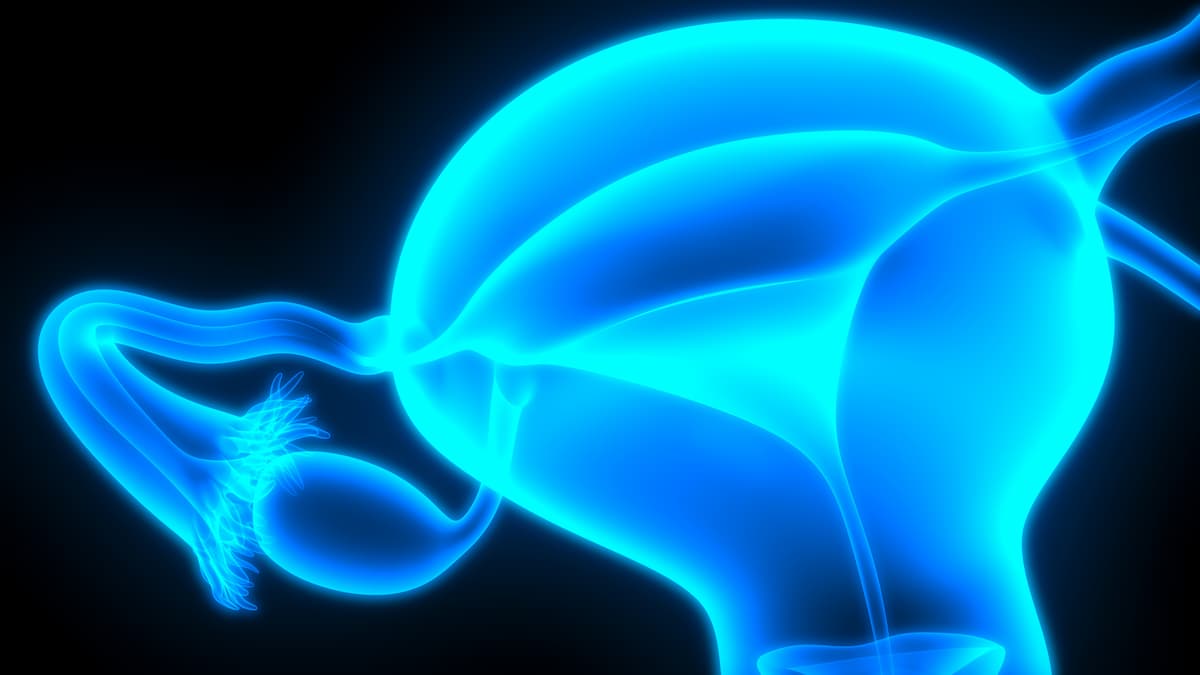PEG Hydrogel Reduces Rectal Radiation During Cervical Cancer Therapy
Investigators noted 1 instance of rectovaginal fistula in the PEG gel arm, although rapid postoperative recovery occurred.
"The application of PEG gel effectively increased the distance between the rectum and cervix, significantly reducing rectal radiation dose without increasing risks to other [organs at risk]," according to the study authors.

The use of polyethylene glycol (PEG) hydrogels significantly reduced radiation doses to the rectum without increasing dosage to other organs at risk among patients undergoing radical concurrent chemoradiotherapy for cervical cancer, according to findings from a phase 3 trial (NCT05690906) published in the International Journal of Radiation Oncology, Biology, Physics.1
Data showed a cumulative rectal D2cc dose of 64.23 ± 6.58 Gy in the PEG hydrogel arm vs 69.79 ± 6.10 Gy among those who received no hydrogel injection in the comparator arm (P <.0001). The cumulative rectal D0.1cc dose was 74.67 ± 12.22 Gy and 84.38 ± 9.91 Gy in each respective arm (P <.01); the cumulative rectal D5cc dose was 60.23 ± 4.96 Gy vs 63.18 ± 5.04 Gy, respectively (P <.01).
In the experimental and comparator arms, respectively, the cumulative bladder D2cc dose was 78.48 ± 6.43 Gy vs 81.11 ± 7.89 Gy (P = .091), the cumulative sigmoid D2cc dose was 62.99 ± 5.38 Gy vs 63.73 ± 5.45 Gy (P = .586), and the cumulative small intestine D2cc dose was 65.75 ± 10.89 Gy vs 65.51 ± 10.19 Gy (P = .395). Investigators noted that the distance of the rectum to the upper edge of the cervix, the lower edge of the cervix to the rectum, and the minimum distance of the cervix to the rectum significantly increased in the PEG gel arm, which was sustained for a maximum of 24 weeks following radiotherapy. Additionally, the volume of the PEG gel was stable throughout radiation therapy and for up to 24 weeks after completion of radiation.
“The application of PEG gel effectively increased the distance between the rectum and cervix, significantly reducing rectal radiation dose without increasing risks to other [organs at risk]. Additionally, PEG gel use in patients with cervical cancer demonstrated good safety. Only 1 case of rectovaginal fistula occurred in the experimental group, with rapid postoperative recovery,” lead study author Yuxuan Wang, MD, from the Department of Radiation Oncology at Peking Union Medical College Hospital of the Chinese Academy of Medical Sciences & Peking Union Medical College, wrote with coauthors in the publication.1 “However, despite the clear reduction in rectal radiation dose in the experimental group, no significant benefits were observed for acute rectal radiation complication or short-term quality of life [QOL] scores. Therefore, an extended follow-up period is necessary to evaluate the long-term impact of PEG gel on rectal radiation complication and QOL.”
In the multicenter, parallel-controlled phase 3 trial, all patients underwent external beam radiotherapy at a maximum of 50.4 Gy in 28 fractions or a minimum of 45 Gy in 25 fractions. Moreover, patients were then assigned to receive a PEG hydrogel injection at 10 mL (n = 45) or no injection (n = 49).
The trial’s primary end point was the cumulative D2cc dose to the rectum during radiotherapy.2 Secondary end points included the implantation success rate of the PEG hydrogel, the stability of the hydrogel, and QOL.
Patients 18 to 75 years old with pathologically confirmed cervical cancer scheduled to undergo radical radiotherapy via intensity-modulated radiotherapy (IMRT) and 3-dimensional brachytherapy and a Karnofsky performance status of at least 70 were eligible for enrollment on the trial. Having no contraindications to CT scanning was another requirement for study entry.
The median age was 59.0 years (IQR, 51.0-64.0) in the PEG injection arm and 59.0 (IQR, 51.0-65.0) in the control arm, and most patients from each arm had squamous cell carcinoma histology (91.1% vs 93.9%). Most patients in each arm had stage IIIC1 disease per FIGO criteria (48.9% vs 44.9%) and treatment with IMRT at 50.4 Gy across 28 fractions (57.8% vs 55.1%).
QOL data showed significant improvements in constipation (P <.01) and symptom experience (P <.05) among patients who received the PEG hydrogel injection at the end of brachytherapy. There were no significant differences in QOL scores across different periods when comparing changes relative to baseline scores.
Acute rectal complications (RARCs) occurred in 55.6% of the hydrogel arm and 46.9% of the control arm; investigators noted no significant differences in RARC incidence between treatment groups. Follow-up assessments revealed chronic radiation-induced rectal complications in 9.5% vs 16.7% of the respective arms, showing no significant differences between arms (P >.05).
Device-related adverse effects (AEs) occurred in 58.7% of the hydrogel arm, with grade 1, 2, and 3 events reported in 23.9%, 32.6%, and 2.2%, respectively. The grade 3 toxicity was a fistula associated with the gel injection process. No grade 4/5 AEs occurred, and symptoms typically resolved within 24 hours after administrating acetaminophen (Tylenol) at 650 mg and dexamethasone at 1.5 mg.
References
- Wang Y, Zhang X, Wang F, et al. Dosimetric and clinical effects of polyethylene glycol gel in radical concurrent chemoradiation therapy for cervical cancer: a phase 3 prospective multicenter randomized controlled trial. Int J Radiat Oncol Biol Phys. 2025;S0360-3016(25)06196-6. doi:10.1016/j.ijrobp.2025.08.045
- Evaluate the effect of ReSpace™ hydrogel on reducing rectal radiation dose in radiotherapy for cervical cancer. ClinicalTrials.gov. Updated July 6, 2023. Accessed November 24, 2025. https://tinyurl.com/y9kmf44r